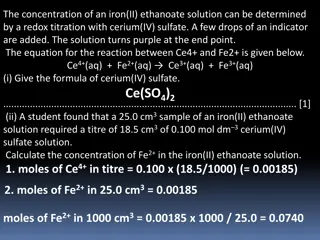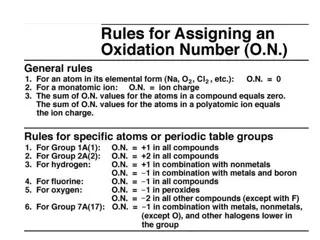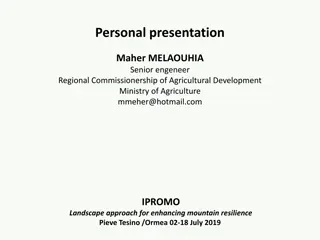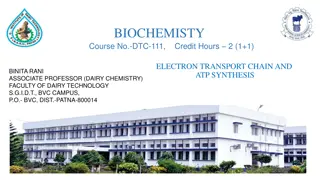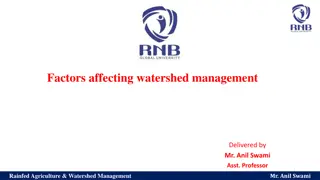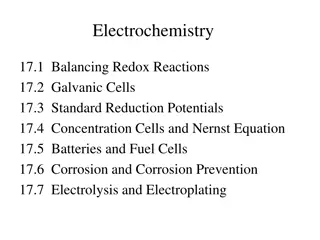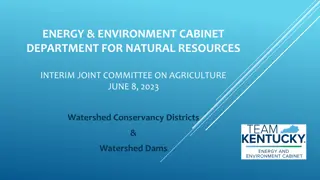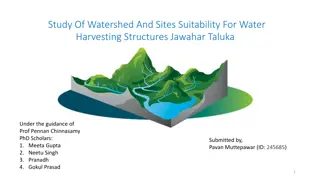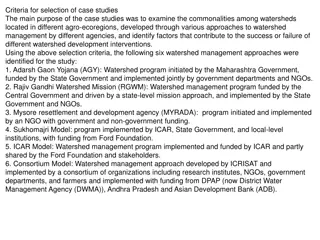Redox Conditions and pH Control in a Mountain Watershed: Study in Red Canyon, Wyoming, USA
Exploring redox conditions and trace element concentrations in a semi-arid mountain watershed, this study in Red Canyon, Wyoming, delves into the impact of oxic surface water and anoxic groundwater on trace element cycling. The investigation aims to enhance understanding of seasonal variabilities, focusing on the redox boundary between surface water and groundwater where biogeochemical cycling occurs. Sampling, analysis with ICP-MS, and comparison with standard reference samples reveal insights into chemical compositions, isotopes, and key parameters like dissolved oxygen, pH, and temperature in surface water and groundwater.
Download Presentation

Please find below an Image/Link to download the presentation.
The content on the website is provided AS IS for your information and personal use only. It may not be sold, licensed, or shared on other websites without obtaining consent from the author. Download presentation by click this link. If you encounter any issues during the download, it is possible that the publisher has removed the file from their server.
E N D
Presentation Transcript
Redox conditions and pH control trace element concentrations in a meandering stream and shallow groundwater of a semiarid mountain watershed, Red Canyon, Wyoming, USA BY NICHOLAS CHAN
Point of the Study Searched for variability in redox conditions and trace element concentrations Wanted a better understanding of oxic surface water and anoxic groundwater s role in trace element cycling in mountain streams To collect water isotope values
Background Information Biogeochemical cycling occurs in the redox boundary between surface water & groundwater Chemical redox and pH affect groundwater composition Transitions between the boundary can cause trace elements to move or stop More needs to be understood about redox conditions influencing trace element cycling Evaluation of seasonal variabilities will be done
Sampling Locations Taken at Cherry Creek and Red Canyon Creek Particle path lines of groundwater MODFLOW and MT3D model to show experimental reach at the canyon Sedimentary beds underneath Takes several years for water to travel through
Sampling Procedure Samples taken from Red Canyon, Wyoming during two different periods Surface water and shallow groundwater were pumped Different values were recorded by using a YSI Quatro multiparameter probe Filtered samples to examine trace element conc. and major cations One blank to track any possible errors
Analysis ICP-MS used to measure concentrations of 40 elements Collision cell for Al, Ca, Cr, Fe, K, Mn, Na, and V (4mL He/min) Same for As and Se (4mL He/min + 2.5mL H2/min) Ar gas for other 30 elements Water samples were compared with USGS and NIST standard reference samples for calibration verification Results were accurate within 10% for most of the elements
Results Isotopes in water had very little seasonal variability in surface/groundwater ( D and 18O) Groundwater had more variability compared to surface water Dissolved oxygen, water temp, ORP, and pH were higher in surface water Positive ORP values in surface water, negative values in groundwater Higher temp in surface waters, pH was greater than 8 in both Major solute conc./conductivity were 50% higher in groundwater
Results Continued Cerium (7x), Fe (90x), and Mn (20x) conc. were higher in groundwater As, Se (30x), and V (5x) conc. were greater in surface water Surface water was oversaturated with carbonate minerals and Fe/Mn oxides Groundwater was undersaturated or at equilibrium Groundwater was oversaturated with Se
Water Chemistry Conclusions Redox and pH play important roles in surface water and groundwater chemistry Reductive dissolution of Mn & Fe oxides from the aquifer = higher conc. of both in groundwater Groundwater oxidation during water exchange oversaturates surface water with Mn and Fe minerals Cerium conc. In groundwater is higher due to solubility Oxyanion forming elements Se, V, and As are higher in surface water lower pH in groundwater leads to more absorption of oxyanion species pH is lower due to calcite precipitation Low Se conc. due to precipitation of Se minerals
Variability Affects trace element chemistry Redox conditions are spatially variable (physical properties and composition of aquifer) Each well had different amounts of dissolved oxygen and Mn/Fe conc. Dissolved oxygen conc. are not accurate in determining redox-sensitive elements Similar isotope ratios and conc. showed lack of seasonal variability (stable system) Na:Ca ratios can indicate age of water (residence times)
Conclusions pH and redox conditions influence trace element conc. at Red Canyon, Wyoming Samples were collected during different seasons to study pH, redox chemistry, and element conc. Surface water was more oxic and had higher pH Groundwater was anoxic and had a somewhat neutral pH Higher Fe/Mn conc. in groundwater due to reductive dissolution of Fe/Mn oxides Less As, Se, V in groundwater because of pH and sorption to aquifer materials High spatial variability but lack of seasonal Connection between surface/groundwater can possibly affect water chemistry




